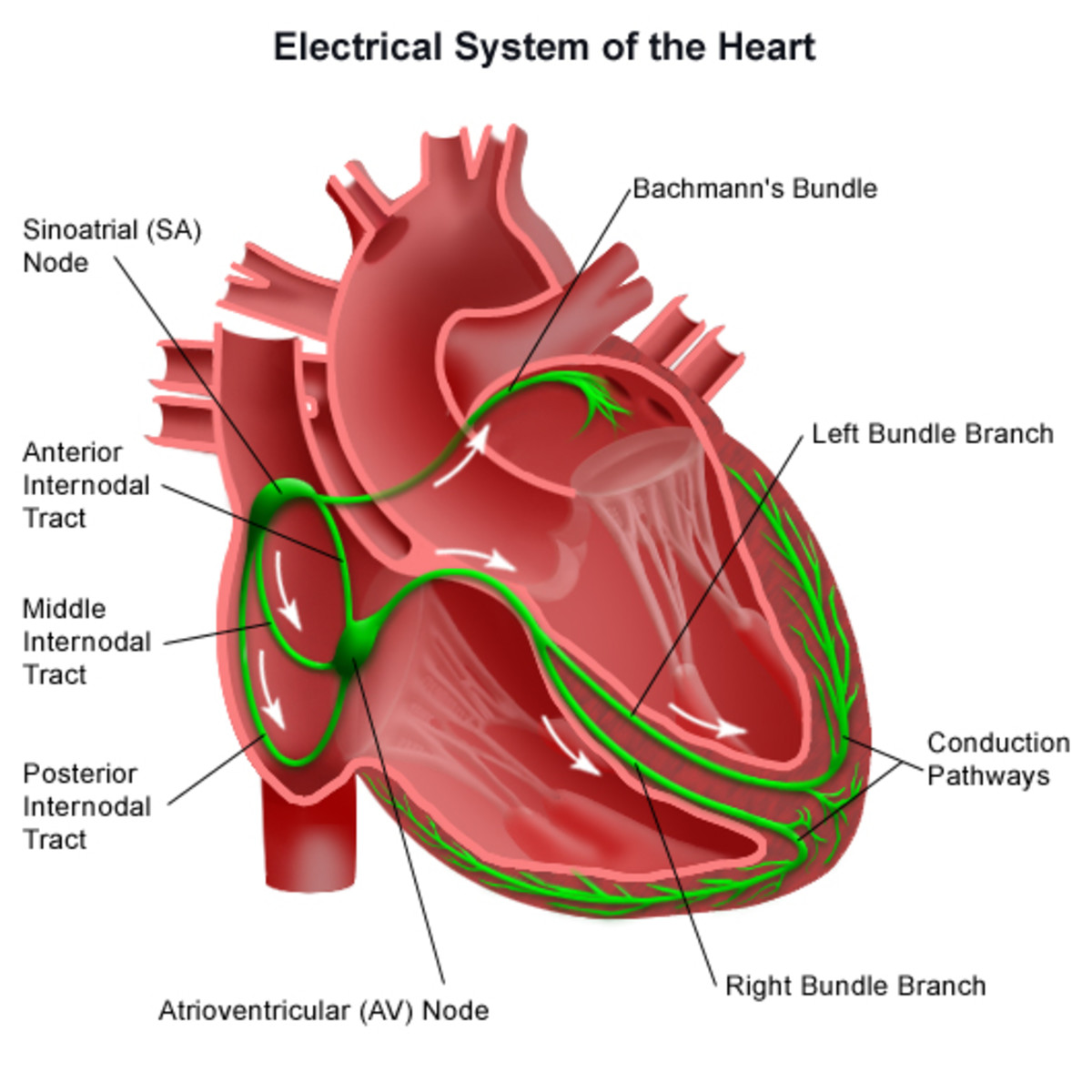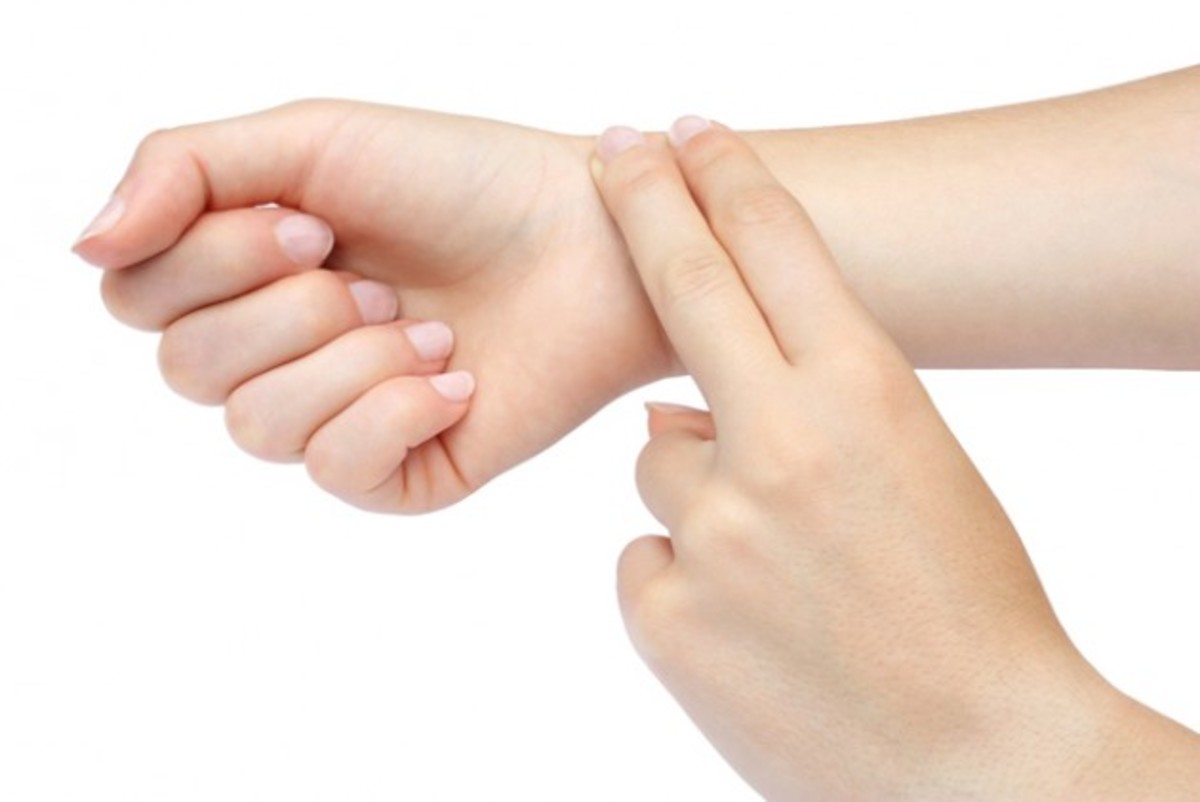Pacemakers give a new lease of life

Young marathon runner with pacemaker
Structure of the heart
This is to give a basic understanding of how the heart works and is not meant for educational purposes.
The heart has four chambers, two upper which are called the Atria and two lower which are called Ventricles.
There are four valves in the heart which open and close allowing the blood to flow in one direction only when the heart contracts and beats.
Each valve has either two or three flaps which open to allow the blood to flow as the pressure across the valves change.
The contraction of the heart is essential for blood to be pumped into the lungs and to all of the body’s other tissues to maintain good health. If the heart fails to contract some tissues can be deprived of oxygen which will eventually lead to further health problems.
The heart is a pump which needs to be regulated by a system which can be compared to an electrical system.
In the right Atrium of the heart there is a little node called the sinus atrial node ( SA node ) also known as the hearts own natural pacemaker. The SA node sends a signal which makes the heart contract on average 100 000 times per day pumping at least 2 000 gallons of blood around your body.
When the SA node fires of it’s signal for the heart to contract an electrical sequence begins. The electrical impulse spreads through the Atria to another little node called the Atrioventricular node ( AV node ) which is situated between the 4 chambers and over the two lower ventricles of the heart.
Here the impulse is sent further down a special set of fibers called the Purkinje fibers otherwise known as the Bundle of His-Purkinje. These fibers run down and around both of the lower chambers of the heart. This is to allow proper contraction of the heart muscle and powerful enough to send the blood further around the body. If you take your hand around a balloon filled with water and squeeze using different amounts of strength you can visualize just how much pressure it will take for the heart to get the blood around the human body.
For the heart to pump properly this same route of electrical signals has to be repeatedly constantly. Sometimes the heart will beat faster than other times depending on what we are doing. A sportsman running a marathon will need to have his heart pump more often than a guy lying on the sofa watching television ( Unless it is a horror film which can get the heart going too )
The point here is that the heart cannot function properly if the electrical signal from the SA node is not sending to the AV node in the proper fashion. This signal is constant in most humans and can be read on an ECG monitor.
A normal heartbeat for a human being is somewhere between 60 and 100 beats per minute on average. Some people can also live happily with a little higher or lower.
Arrhythmias
When the heart rhythm does not beat normally this is called an arrhythmia.
Arrythmias can be quite harmless but sometimes they can be due to an underlying reason which can be life threatening and should never be ignored.
Some arrhythmias are so brief that the heart may slow down or speed up temporarily but will be regulated by the SA node and no harm will come to the person.
However, if an arrhythmia lasts longer then the heart will pump less effectively and problems can arise.
A fast heart rate which is over 100 beats per minute is called Tachycardia
A slow heartbeat is Bradycardia.
An arrhythmia can occur when the hearts natural pacemaker develops an abnormal pacing rate, if the conduction route becomes blocked for some reason or other or if another part of the heart takes over as the pacemaker. Under some conditions a backup system in the heart can fire electrical impulses instead of the SA node.
It is important to note that not all arrhythmias will lead to problems.
Signs of arising problems will usually be detected if there are episodes of fainting, dizziness, difficulty in breathing or constant fatigue.
High or low blood concentrations of potassium, magnesium and calcium can cause problems as these minerals play a vital role in starting and conducting normal impulses in the heart.
Although I won’t go into the different types of arrhythmias here I will mention that having untreated arrhythmias increases the risk of heart attacks, stroke and cardiac arrest and should be followed up by your health care provider.
You should aim to reduce high blood pressure and lower your cholesterol levels.
Over weight should be managed and a healthy diet should be followed.
Smoking should be reduced or stopped all together if possible and physical activity should become a normal part of your daily routine.
When an arrhythmia needs attention
Your arrhythmia causes one or more of the symptoms associated with heart irregularity.
Dizziness
Fatigue
Light headed without any reason.
Fainting spells where you are completely out ( Syncope )
Near fainting
Breathing problems or shortness of breath
Pounding heartbeat for no particular reason
Chest Pain.
Artificial Pacemakers
There are many different treatments for different types of arrhythmias but here I have chosen to concentrate on the artificial pacemaker.
This is a small battery operated device that helps the heart beat in a regular rhythm. There are two parts to the device. Firstly a little metal box which is operated under the skin near the collarbone which acts like a generator. Secondly there are wires which are attached to the generator and are lead into the heart chamber .
When the hart needs assistance in beating the generator will detect this and send impulses from the artificial pacemaker down the wires and into the heart allowing it to contract normally.
The pacemaker is a battery powered device and the battery will last up to ten years in some cases before it needs changed. The wires which are implanted into the heart will remain in place and it is only the power generatior which needs attention.
The pacemaker is there to replace any defect found within your hearts own electrical system.
However, most pacemakers do have a sensing mode which inhibits sending signals if the heartbeat is above a certain level. This only allows for the pacemaker to kick in when the heartbeat falls to an unhealthy or decided amount of beats per minute. In other words it detects when the heart beat is too slow and takes over . This is called an on demand pacemaker.
Myths and problems with the pacemaker
There has been much written about the pacemaker not working properly when it comes into contact with certain home devices and modern equipment.
Radios, drills, hairdryers, microwaves, TV transmitters, remote controls, iphones, I pads etc etc have all caused concern for people with artificial pacemakers.
While many devices have a remote potential to interfere with a pacemaker a single beat out of the ordinary is not going to play havoc with your life. Most of this equipment is used by pacemaker patients all over the world on a daily basis.
Equipment such as large powerful magnets, industrial welding equipment are something else and can interfere with the pulse generators. Anyone working with this type of equipment should be aware that their pacemaker may not work optimally and monitor any problems .
As for the new generation of mobile phones. Each company supplying these are looking into possible problems and will issue a warning if appropriate.
Airport security systems will not interfere with your pacemaker but it will pick up on the metal box under your skin. Therefore your identification card should be shown and you will be led through a manual security search instead.
All persons who have operated in an artificial pacemaker are issued with an identification card and should carry this with them at all times.
Living with a pacemaker
Having a pacemaker doesn’t mean that your life is over, on the contrary it is there to enhance your quality of life.
My husband who has just turned 50 was operated for bradycardia and given an artificial pacemaker in August 2010. After the initial 6 weeks of not being able to lift his arm above his shoulder height ( Giving the device time to settle and for the leads to settle ) he was going about his normal lifestyle within days of the operation.
After only 2 days rest he was back at work. Within 1 week he was out running 10km. By 2 months post op he was once again running over 20km.
After 6 weeks he was up on the roof mending leaks from the storms in autumn and the best thing about it was that I didn’t have to worry about him fainting and falling from the roof or ladder.
The worst part of the whole ordeal was when he was diagnosed with an ECG arrhythmia and wasn’t allowed to drive until after his operation.
This 4 weeks of waiting and being dependant made him realize just how lucky he was to find out about his heart problem and what an advantage living with an artificial pacemaker was.
As a wife to a husband with a pacemaker I can really take advantage of his new found energy and enjoy the fact that he will never faint again which for me was quite frightening when it happened.
I am extremely grateful for having my husband the way he is and wouldn’t change him for the world.








